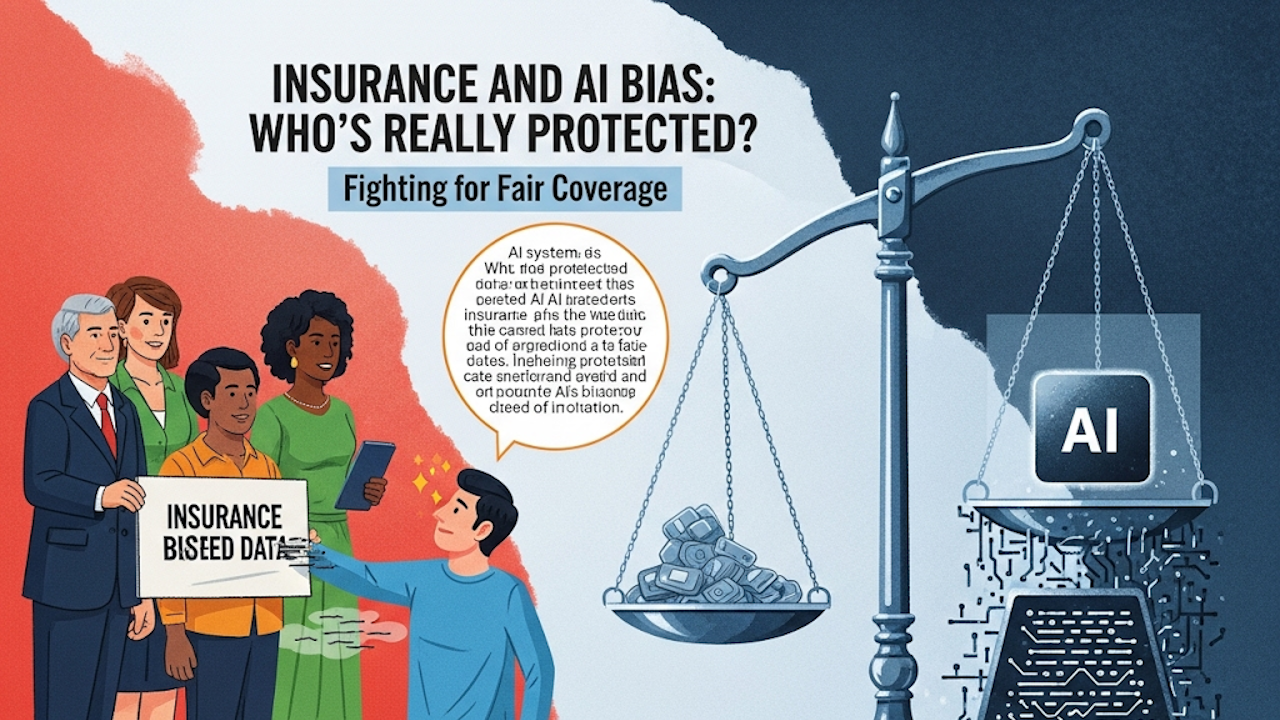The insurance industry has always relied on data. From determining premiums to evaluating risk, insurers use vast amounts of information to make decisions that affect millions of people. Today, artificial intelligence (AI) is playing an increasingly central role in that process. AI offers speed, efficiency, and precision, but it also raises a critical question: who is truly being protected by these technologies? As AI becomes more entrenched in insurance practices, concerns about bias and fairness have come to the forefront.
AI systems are only as good as the data they are trained on. Insurance companies often use historical data to predict future outcomes. However, if that data reflects past inequalities or social biases, the AI system can inadvertently learn and perpetuate those same biases. For example, if historically certain zip codes, often home to minority populations, were labeled as high risk due to economic or systemic issues, an AI model trained on that data may continue to assign higher premiums or deny coverage to individuals from those areas, regardless of their personal behavior or risk profile.
One of the most troubling aspects of AI bias in insurance is its invisibility. Traditional underwriting methods, though imperfect, were often easier to scrutinize. Human underwriters made decisions based on known criteria, and those decisions could be reviewed and questioned. In contrast, many AI models function as “black boxes.” Even their developers may not fully understand how decisions are made. This opacity makes it difficult for consumers to challenge unfavorable outcomes or for regulators to assess whether discrimination has occurred.
Car insurance offers a clear example of this issue. AI models may consider a range of factors when determining premiums, including driving behavior, credit scores, location, and vehicle type. While this can lead to more accurate risk assessments, it can also penalize drivers unfairly. Credit scores, for instance, have little to do with driving ability, yet they remain a significant factor in many auto insurance algorithms. This disproportionately affects low-income individuals and communities of color, who are statistically more likely to have lower credit scores due to systemic economic disparities.
Health insurance is another area where AI bias can have serious consequences. Algorithms may analyze medical histories, prescription patterns, and lifestyle data to determine coverage eligibility or premium costs. But health data can reflect long-standing inequalities in access to care. Communities that have faced barriers to healthcare may appear higher risk, not because of individual choices, but because of institutional shortcomings. An AI system trained on such data might deny them coverage or make it unaffordable, effectively punishing them for being underserved.
Even in life insurance, where data is supposed to be objective, AI can introduce bias through the selection of variables. Seemingly neutral inputs like education level, employment history, or social media activity can serve as proxies for race, gender, or income. This indirect form of discrimination is harder to detect and challenge, yet its impact is real. A person may be denied life insurance or charged a higher rate not because of health or lifestyle, but because of an algorithmic assumption based on their digital footprint.
To address these issues, some insurers and regulators are advocating for greater transparency and accountability. There is a growing push for explainable AI, which aims to make the decision-making processes of algorithms more understandable to humans. This could help consumers know why they were denied coverage or charged a higher premium and could allow regulators to ensure compliance with anti-discrimination laws.
Additionally, some experts suggest incorporating fairness metrics into AI development. These are statistical tools designed to detect and mitigate bias in algorithms. For instance, developers can test whether an AI system disproportionately affects certain demographic groups and adjust the model accordingly. Regular audits, diverse training datasets, and collaboration with ethicists and sociologists are other ways to ensure more equitable outcomes.
However, meaningful change also requires addressing the underlying data. If historical data is biased, simply refining the algorithm may not be enough. Insurers need to critically evaluate the data they use and consider the social context in which it was generated. This may involve discarding certain data points or investing in more representative datasets. It is not an easy task, but it is a necessary one if AI is to be used responsibly.
Consumers also have a role to play. As awareness of AI bias grows, individuals and advocacy groups are pushing for stronger consumer protections. They are calling for the right to explanation, so that people can understand how decisions are made about their insurance. They are also demanding more regulatory oversight and the establishment of ethical guidelines for AI use in financial services.
In the end, AI has the potential to make insurance more efficient and inclusive. But without careful oversight and a commitment to fairness, it can also reinforce existing inequalities. The question is not just who is protected by insurance, but who is protected from the unintended consequences of the technology behind it. As AI continues to reshape the insurance industry, ensuring that everyone is treated equitably must be a top priority. Otherwise, we risk building a system that protects profits more than people.

